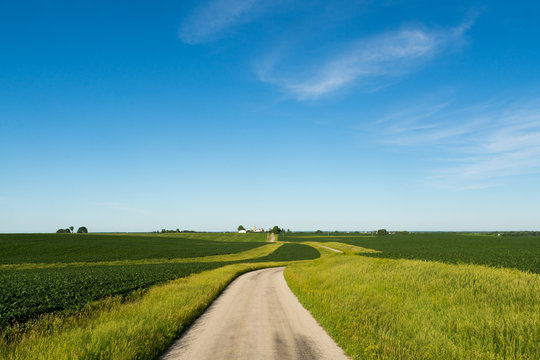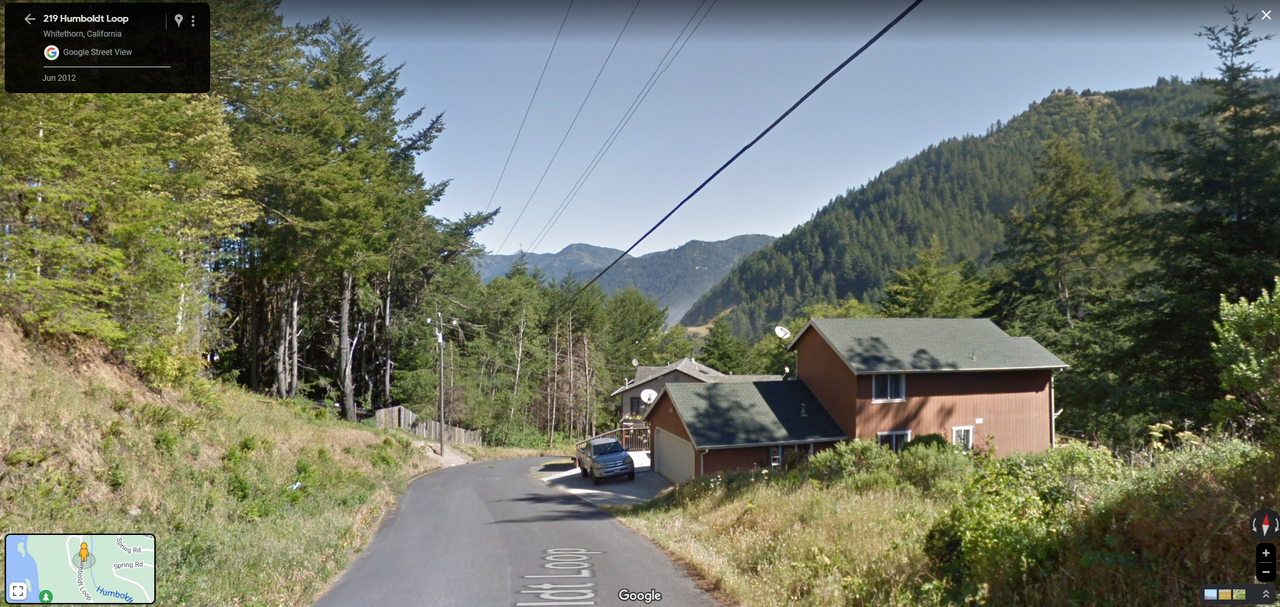|
|
Post by sari on Apr 16, 2023 1:34:26 GMT -5
Post any you've noticed.
For me the big ones are basically all of New Zealand (looks way too "tropical") and Singapore (doesn't look nearly as tropical as it is).
|
|
|
|
Post by caspase8 on Apr 25, 2023 1:36:00 GMT -5
Queenstown, Tasmania is a classic example. Despite getting 2400+mm of rain a year, the treeless surrounding hills make it look semiarid.
Unfortunately, the native temperate rainforest was killed off by excessive copper mining in the area.
|
|
|
|
Post by Ethereal on Apr 25, 2023 8:15:37 GMT -5
New Orleans and proximate warm subtropical places in SE USA which look like they're in the midwest or something:  |
|
|
|
Post by Steelernation on Apr 25, 2023 13:28:12 GMT -5
New Orleans and proximate warm subtropical places in SE USA which look like they're in the midwest or something:  Ah yes that’s totally what the Midwest looks like… |
|
|
|
Post by alex992 on Apr 25, 2023 14:29:38 GMT -5
New Orleans and proximate warm subtropical places in SE USA which look like they're in the midwest or something:  Lmao. Bald cypress and Spanish Moss is the very definition of "subtropical SE". Nowhere in the Midwest looks like this. |
|
|
|
Post by MET on Apr 25, 2023 14:31:40 GMT -5
NZ with some quite tropical looking vegetation in areas where summers are as shit as the UK.
|
|
|
|
Post by 🖕🏿Mörön🖕🏿 on Apr 25, 2023 15:06:30 GMT -5
New Orleans and proximate warm subtropical places in SE USA which look like they're in the midwest or something:  Lmao. Bald cypress and Spanish Moss is the very definition of "subtropical SE". Nowhere in the Midwest looks like this. yeah I wasn't gonna respond but I can't not respond. Nothing like the Midwest. Anyway for this thread, I'd say the vegetation of the UK totally doesn't fit as it looks like it belongs in New Zealand. |
|
|
|
Post by MET on Apr 25, 2023 15:10:45 GMT -5
Anyway for this thread, I'd say the vegetation of the UK totally doesn't fit as it looks like it belongs in New Zealand. I no rite? Sum ppl have palm trees here too but they don't even match the architecture. Like wtf? |
|
|
|
Post by 🖕🏿Mörön🖕🏿 on Apr 25, 2023 15:15:24 GMT -5
Here's a pic from Illinois aka the heartland of the Midwest.  |
|
|
|
Post by desiccatedi85 on Apr 25, 2023 15:24:14 GMT -5
And here's a pic of a plantation in coastal Georgia. Note the subtropical live oaks draped in Spanish moss. Live oak, sabal palmetto, Spanish moss, bald cypress, and longleaf pine are the big 5 SE US subtropical indicators. This is not Illinois! 
|
|
|
|
Post by desiccatedi85 on Apr 25, 2023 15:30:14 GMT -5
Returning back to the main thread topic though, here's Lençois Maranhenses National Park in Northeast Brazil. Huge sand dunes make it look like a hyperarid desert, but the area is a tropical savanna climate that gets 90" of annual rainfall (nearest station at São Luís). |
|
|
|
Post by Ethereal on Apr 29, 2023 23:26:55 GMT -5
New Orleans and proximate warm subtropical places in SE USA which look like they're in the midwest or something:  Lmao. Bald cypress and Spanish Moss is the very definition of "subtropical SE". Nowhere in the Midwest looks like this. All I see are dead, bare trees (just noticed the moss now tbh, good eyes there alex). But my point remains valid that I don't expect a place like New Orleans to look "dead" in the winter. 😏🙄 |
|
|
|
Post by Ethereal on Apr 29, 2023 23:41:45 GMT -5
New Orleans and proximate warm subtropical places in SE USA which look like they're in the midwest or something:  Ah yes that’s totally what the Midwest looks like… Forget the moss (I just noticed it). Image is not the best quality. Alex also mentioned bald cypress, which I couldn't recognise at all, maybe because I'm not a plant ID app nor am I very knowledgeable of US flora! Hard to tell anyway from a <500 px image. But that environment, with all the bare trees, doesn't look exceptionally different from this one (in the midwest):  A forest of bare trees lookalike to me. Sorry... |
|
|
|
Post by fairweatherfan on Apr 30, 2023 0:03:10 GMT -5
Ah yes that’s totally what the Midwest looks like… Forget the moss (I just noticed it). Image is not the best quality. Alex also mentioned bald cypress, which I couldn't recognise at all, maybe because I'm not a plant ID app nor am I very knowledgeable of US flora! Hard to tell anyway from a <500 px image. But that environment, with all the bare trees, doesn't look exceptionally different from this one (in the midwest):  A forest of bare trees lookalike to me. Sorry... I’m not really familiar with eastern US vegetation either, but just at a glance first pic looks like conifers, second pic looks like broadleaf trees |
|
|
|
Post by rozenn on Apr 30, 2023 4:03:54 GMT -5
Yeah, as someone who lives in a place with bare trees in winter, the first one looks totally exotic to me, for the reasons stated above, while the second one looks like the forest next door.
|
|
|
|
Post by Marcelo on Apr 30, 2023 5:12:18 GMT -5
Tierra del Fuego seems to lush for its miserable summers.
Lago Escondido is at 100 m., near Tolhuin, so the warmest month averages about 9C.
Cerro Castor is a ski resort; the base is at 200 m, the picture is easily at 300-400 m., so the warmest month averages 8C at most. I've seen patches of snow in midsummer in areas where some trees still grow.
These places look definitely cool/cold, but not having "tundra" climate.
|
|
|
|
Post by Marcelo on May 1, 2023 5:13:28 GMT -5
The humid pampas may also seem too ‘open’ and treeless for a place of such rainfall and temperatures. Most of the region is nowadays crops, but some reserves still show its original look, i.e. Campos del Tuyú, near Dolores (summers 22C; winters 8C; yearly rainfall circa 1000 mm).
|
|
|
|
Post by 🖕🏿Mörön🖕🏿 on May 8, 2023 8:08:10 GMT -5
I'll give a mention to the northern California coast. Looks like a place that gets proper winters but that is not true at all. This place is less than 200 miles north of San Francisco and looks like it has a continental climate but has winters that aren't even cold: en.wikipedia.org/wiki/Shelter_Cove,_California#Climate   |
|
|
|
Post by alex992 on May 14, 2023 10:17:10 GMT -5
Lmao. Bald cypress and Spanish Moss is the very definition of "subtropical SE". Nowhere in the Midwest looks like this. All I see are dead, bare trees (just noticed the moss now tbh, good eyes there alex). But my point remains valid that I don't expect a place like New Orleans to look "dead" in the winter. 😏🙄 Meh, it doesn't take much cold to make bald cypress go bare in winter (hence, "bald" cypress). Even inland southern Florida looks like this in winter in swampy areas with lots of cypress. |
|
|
|
Post by Ethereal on May 18, 2023 5:32:46 GMT -5
All I see are dead, bare trees (just noticed the moss now tbh, good eyes there alex). But my point remains valid that I don't expect a place like New Orleans to look "dead" in the winter. 😏🙄 Meh, it doesn't take much cold to make bald cypress go bare in winter (hence, "bald" cypress). Even inland southern Florida looks like this in winter in swampy areas with lots of cypress. I guess it's an Aussie perspective thing, cos no native species here go bare in winter (besides southern beeches in Tasmania, which are an anomaly and restricted to a very small region in Tasmania) and so when we see a "dead" woodland in winter we'd assume "yikes it's probably cold asf there" when it usually isn't. But then again, I noticed that even hot places like in northern Iraq where summer temperatures average at 40C or 104F feature native vegetation that are deciduous in nature like poplars, planetrees, plums and figs. So, if anything, Australia is the odd one out. Duhok Iraq in winter (which has Phoenix-like summers and Rome-like winters as average highs go):  If I didn't know, I'd think this place was a village in some mountain in Japan. |
|